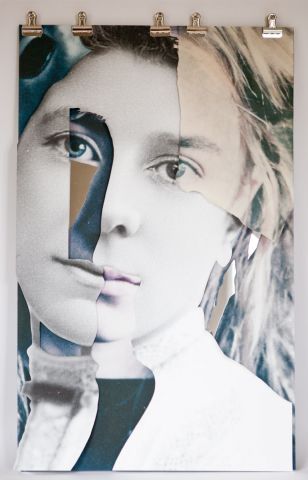I draw is a slippery term. In isolation it’s imprecise and needs context to confer meaning. It could be about air, attention, carriage, comparison, conclusion, curtains, game, gas, lots, liquid, money, move, picture, pull, reaction, smoke, talk, or weapons. It might be an idiom such as the battle lines are drawn or I draw breath. (1)
I enjoy this feeling of slipperiness!
I’m interested in the context of drawing a picture by making a mark on a surface. This could be made with chalk, charcoal, crayon, electronic drawing, erasers, ink, markers, silverpoint, pastels, pen or pencil. Can one draw with light? Is the cast of a shadow a drawing? Does a cut line constitute drawing?
Drawing is difficult to define and shifts with the times but one point of view is it delineates form with lines. (2) Since similar materials can be involved, whether something is a painting or a drawing seems to hinge on the nature of the marks made – linear verses a more saturated excess perhaps?
Another perspective is that a two-dimensional surface is marked permanently or impermanent by drawing – a small amount of material is deposited to leave a visible mark. (3) This rules out light and the cut line as drawing mediums. However, another stance indicates that artistic intention is key, with the result anything could potentially be considered drawing.
At the moment I’m clear I don’t make drawings. I briefly used a scalpel to delineate the curve of a face or angle of neck on the pictures of women in my collages. The cut was made instinctively in reaction to each image. This felt like it teetered on the borders of drawing, but then I moved away from the approach and the feeling dissipated.
Bibliography
1 http://www.oxforddictionaries.com/definition/learner/draw (1st September 2015)
2 http://www.vam.ac.uk/content/articles/w/what-is-drawing/ (1st September 2015)
3 https://en.wikipedia.org/wiki/Drawing (1st September 2015)



